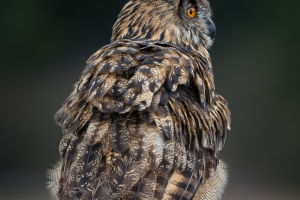The swallow is a common bird and has been loved by people since ancient times.
It is also said that swallows like to spend time with humans, which is why they make their nests in people's eaves.
The swallow is a general term for a bird, but there are many different kinds of swallows.
Swallows are characterised by their small size, narrow wing tips, concave tail and short bill, weak feet and not too many feathers.
Swallows are a collective name for 74 species of birds in the bird family of the order Finchidae, with plumage that is either monochromatic or has a metallic blue or greenish tinge, with most species being similar in both sexes.
Swallows consume a lot of time in the air to catch pests and are one of the most agile finches, feeding mainly on insects such as mosquitoes and flies, and are known to be beneficial birds.
They have never been accustomed to catching flying insects in the air and are not as adept at searching for insect food in cracks and crevices, nor are they able to munch on berries, seeds like grouse and thunderbirds, or discover larvae, pupae and eggs of lurking insects like woodpeckers and woodpeckers.
Swallows living under people's roofs can be called house swallows, while some swallows living on cliff faces are called golden swallows.
Although they belong to the same family of swallows, their lifestyles and nesting methods are very different.
Swallows usually breed from April to July.
House swallows nest under the eaves of a farmhouse.
The nest is made of mud and stems of grasses, and is lined with soft weeds, feathers and rags, as well as some artemisia leaves.
The nests of swallows are dish-shaped.
They breed twice a year, mostly from May to early June and from mid-June to early July.
There are more than 80 species of swiftlets in the world.
The common species in China are the House Swallow, Golden-backed Swallow, White-backed Swallow, Common House Swallow, Rock Swallow, Cliff Sand Swallow and Hairy-footed Swallow.
Some of them nest in tall buildings (ancient buildings, schools and other public buildings), while others nest in the wild (in caves, cliff faces, rock crevices, under bridges, etc.).
The nest is similar to that of the Golden-rumped Swallow, and nesting sites can be found in the wild, indoors or outdoors.
Most nests are made of mud, reinforced with grass stems and twine, and finally covered with soft grass, feathers and hair.
In ancient times, almost all the buildings were built with logs, and the horizontal purlins were easy to fix, which made it possible for swallows to build their nests indoors.
House swallows are highly spiritual birds.
With a higher ability to perceive human movements, sounds, emotions and atmospheres than other birds, meaning "humane" as the saying goes.
They can sense the kindness of the farmer and are willing to get close to humans.
This relationship was passed on from generation to generation among humans, and from generation to generation among house swallows until evolution was recorded at the genetic level.
One day the first pair of brave house swallows took the decisive step of entering the nest! The farmer was overjoyed when the guardian of the crops came to settle in his house and welcomed it as an auspicious sign.
Today, the ecology has been destroyed and the habitat for swallows is becoming less and less available, and they are facing unprecedented challenges.
I hope that everyone will have a kind heart and live in peace with the swallows.


